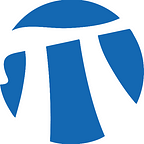Weaving A New Future For Indigenous Education
By Jimmy Fryers
Math is perhaps not the first thing that comes to mind when thinking about traditional First Nations basket weaving, but it’s becoming more apparent that many traditional Indigenous skills and practices are based on mathematical principles passed down through the generations.
Digitally recording this knowledge will ensure that it’s available for future generations, while being accessible to the current. This is what a team from the Department of Mathematics at Simon Fraser University, under the supervision of Prof. Veselin Jungic and Prof. Cedric Chauve, set out to achieve using a unique online platform called Callysto.
Callysto is an online platform that uses Jupyter Notebooks to integrate research and analytics capabilities, along with other computing functions such as coding, interactive graphics, multimedia, and digital math functions, to enhance computational and design thinking skills in kids. It was developed through a collaboration between the Pacific Institute for the Mathematical Sciences (PIMS) and Cybera, using funding from the Canadian Government’s CanCode program.
Mutual Trust
Since its inception in 1996, PIMS has fostered a relationship with First Nations communities built on the foundations of mutual trust and respect. Staff have worked alongside Indigenous peoples in British Columbia, Alberta, Saskatchewan and Manitoba to implement interesting and challenging math programs, including Math Mania, high school summer camps for Indigenous students in Vancouver, transitional summer camps, peer-mentorship programs, and math education workshops.
Out of these education-based outreach programs was born Callysto, whose goal is to support initiatives that aid coding and digital skill development among Canadian youth.
Recognizing that, as technology develops, so does the needs of students across Canada, Callysto seeks to equip them with the digital literacy they will need to enter the workplace of the future. Computational thinking is a key component of digital literacy, but teaching it poses a challenge to both teachers and students. The Callysto platform was created to meet that challenge.
The platform was originally developed for universities and researchers to share their analyses, but is also now frequently used as an interactive textbook in secondary school classrooms.
Math and Basket Weaving
Using Callysto, Profs Jungic and Chauve set out to create content that teaches basic geometric math concepts based on the intricate weaving of Indigenous basket patterns.
Using baskets provided by the Tla’amin Nation on the Sunshine Coast, their team of undergraduate students developed a program that incorporates the weaved patterns and enables them to be flipped, reflected and visualized as 3D shapes. The tool uses basic math operations of symmetry, reflection, and translations, and allows users to create and preview complex patterns, as well as generate completely new designs.
According to Jenifer Pham, a student who worked on this project:
“The idea was to allow people to learn about these patterns, create new patterns, store traditional patterns, and pass of knowledge on to future generations.”¹
The potential of the Callysto platform and the importance of this work should not be understated — it demonstrates that modern technology can be used to enable First Nations communities to preserve, maintain and share their traditions and knowledge. It also shows that Indigenous content can be at the forefront of computational and math education in schools across Canada, promoting inclusiveness and encouraging reconciliation.
What’s next?
This is just the start. In the coming months, a meeting will be held between members of Jungic’s team, PIMS, and Indigenous elders from First Nations communities in Canada to establish new, collaborative notebook ideas.
This will enable mathematical principles contained within Indigenous knowledge, techniques and traditions to be preserved electronically, and help create more educational material that reflects First Nations culture of everyday classrooms.
Here are some ideas that are being considered for future math notebooks based on Indigenous content:
- Mathematical models of traditional fish traps
- Mathematical models of traditional salmon harvesting strategies
- Mathematical models of traditional longhouses
- Mathematical models of traditional pit houses (interior Salish)
- Mathematical models of traditional beading
- Mathematical models of traditional canoe building
- Mathematical models of traditional basket making
- Mathematical models of traditional bentwood boxes
- Mathematical models of the Raven story
Note: More information about the basket weaving notebooks, together with the detailed instructions on how to access them are posted here.
Reference(s)
[1] Diane Lucklow. (2018). New app uses Indigenous basketry patterns to teach math concepts. Simon Fraser News (online).
